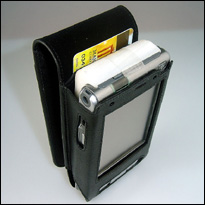Nov 10, 2005Norwegian State Railways (NSB), along with the 19 counties across Norway, are preparing to roll out contactless ticketing across the nation's public railway system. The introduction of radio frequency identification into tickets and ticket machines at NSB is expected to improve customer service by giving customers more control over how they use the transportation services.
"It means a change of atmosphere for the customers—more self-help," says Benedicte Overgaard, mobile terminal project leader at NSB. "Just as bank customers like Internet banking because they can operate the account themselves, this will mean the same for the railway system."

Starting in 2006, NSB will issue one-trip e-tickets made of paper, as well as multi-trip e-tickets that will come in the form of plastic smart cards. The one-trip e-tickets will be embedded with a Philips Mifare Ultralight chip with 512 bits of EEPROM read-write memory. The multi-trip tickets will contain a Mifare DESFire chip comprising 4 kilobytes of nonvolatile read-write memory, along with a triple DES data encryption coprocessor for additional security. Both Mifare chips conform to the ISO 14443A standard.
Customers will be able to load their multi-trip e-tickets with prepaid credit that can be used to pay for a trip to any destination—something not possible with the existing tickets. Currently, NSB issues conventional paper tickets, each specifying the trip's point of origin and destination. An e-ticket, on the other hand, can be purchased without locking customers to a specific route.
RFID-enabled tickets will be gradually introduced across the Norwegian transport system, with each county responsible for the speed of adoption. NSB will deploy 853 mobile terminals, which conductors on board trains will use to sell tickets and validate them for specific trips. The validation process activates the e-ticket for a particular trip, deducting the appropriate fare from the payment amount stored on the e-ticket's chip. Customers will be able to buy e-tickets at train stations.
Although each new e-ticket multi-trip cardholder must purchase their first smart card at a station, additional credit can be added at the station, at banks or online at NSB's Web site. When customers are ready to use a multi-trip card for a specific trip, they can validate it prior to boarding the train, using one of the 300 validating machines deployed at NSB stations around the country.
In addition, NSB plans to introduce two new compartments for travelers on its trains. Passengers holding validated tickets for their journey will sit in one area, while those holding unvalidated tickets (or without tickets) will sit in another section. In the latter area, conductors will concentrate their efforts on selling and validating tickets during the journey. Customers seated in the non-validated compartment will be charged a small additional fee to purchase a ticket or have their e-ticket validated. If a passenger without a validated ticket sits in the compartment restricted to validated ticket holders, the conductor will levy a significant fine on top of the ticket price.
At present, travelers can buy conventional paper tickets but may opt not to validate them prior to boarding the train. Conductors must, therefore, check and, if necessary, validate the tickets of every passenger throughout a whole train. Sometimes, however, conductors do not have the time to check the tickets of all passengers, according to NSB. As a result, those passengers get to ride for free.
Once the new RFID tickets, ticketing infrastructure and passenger compartments are deployed, NSB expects conductors to be able to check more tickets on each journey. This, the railroad believes, will help ensure more travelers pay for their travel, even though checking an e-ticket takes a few seconds longer than with traditional paper tickets.
"Now conductors don't have time to check everyone's ticket. With RFID [and the new compartment arrangement], they will," says Kjell-Erik Eilertsen, team project manager at NSB. The new handheld mobile terminals are Pocket PC PDAs from Siemens AG, fitted with an RFID reader from Arcontia, which is also supplying the e-ticket validating machines.
NSB plans to use information collected at the validating machines to help understand the flow of passengers on its railway system, and to improve service. It also believes its passengers will welcome the addition of RFID to its tickets. "There is no fear of RFID here," says Eilertsen. "Our customers are longing to use the new system. We have customers already trying to put their bank cards in the machines to get an e-ticket."

